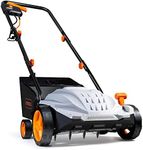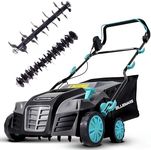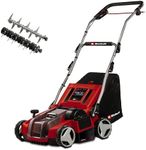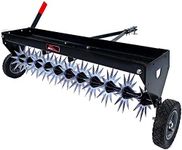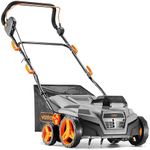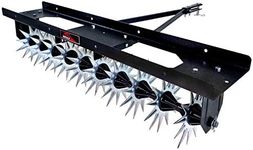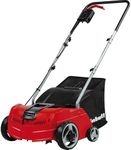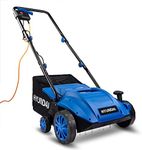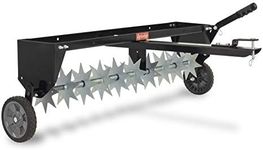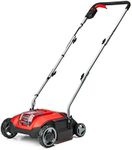Buying Guide for the Best Lawn Aerators
Choosing the right lawn aerator can make a significant difference in the health and appearance of your lawn. Aeration helps to alleviate soil compaction, allowing air, water, and nutrients to penetrate the grass roots. This process promotes healthier, stronger grass. When selecting a lawn aerator, it's important to consider several key specifications to ensure you pick the best fit for your lawn's needs and your personal preferences.Type of AeratorThere are two main types of lawn aerators: spike aerators and plug (or core) aerators. Spike aerators use solid tines to poke holes in the soil, while plug aerators remove small plugs of soil. Plug aerators are generally more effective for reducing soil compaction and promoting healthy grass growth, but they can be more labor-intensive. Spike aerators are easier to use and are suitable for less compacted soils. Choose a plug aerator if your lawn has heavy clay soil or significant compaction issues, and a spike aerator for lighter, less compacted soils.
Manual vs. PoweredLawn aerators can be manual or powered. Manual aerators are typically less expensive and are suitable for small to medium-sized lawns. They require physical effort to operate, which can be a good workout but may be tiring for larger areas. Powered aerators, which can be either electric or gas-powered, are more efficient and easier to use for larger lawns. They can cover more ground quickly and with less effort. If you have a small lawn and don't mind some physical activity, a manual aerator may be sufficient. For larger lawns, a powered aerator will save you time and energy.
Aeration DepthThe depth of aeration refers to how deep the tines penetrate the soil. Deeper aeration allows for better root growth and improved soil structure. Most aerators offer adjustable depth settings, typically ranging from 1 to 4 inches. For general lawn maintenance, a depth of 2 to 3 inches is usually sufficient. If your lawn has severe compaction or you are trying to establish new grass, you may want to opt for deeper aeration. Consider the condition of your lawn and choose an aerator that allows you to adjust the depth according to your needs.
Width of Aeration PathThe width of the aeration path determines how much ground you can cover in a single pass. Wider aeration paths mean fewer passes are needed to cover your entire lawn, saving you time and effort. Aerators typically have widths ranging from 8 to 48 inches. For small lawns, a narrower width may be sufficient, while larger lawns will benefit from a wider aeration path. Consider the size of your lawn and how much time you want to spend aerating when choosing the width of the aeration path.
Ease of UseEase of use encompasses several factors, including the weight of the aerator, handle design, and maneuverability. A lightweight aerator is easier to push and maneuver, especially in tight spaces or on uneven terrain. Ergonomic handles can reduce strain on your hands and arms during use. Some aerators also come with features like foldable handles for easy storage or transport wheels for better mobility. If you have physical limitations or a large lawn, look for an aerator that is designed for ease of use to make the process more comfortable and efficient.
Durability and Build QualityDurability and build quality are important considerations, especially if you plan to use the aerator frequently or have a large lawn. Look for aerators made from high-quality materials like steel or heavy-duty plastic. Check for sturdy construction and reliable components, such as strong tines and robust wheels. A well-built aerator will last longer and perform better over time. If you have a large lawn or plan to aerate regularly, investing in a durable, high-quality aerator will ensure it can withstand regular use and provide consistent results.
